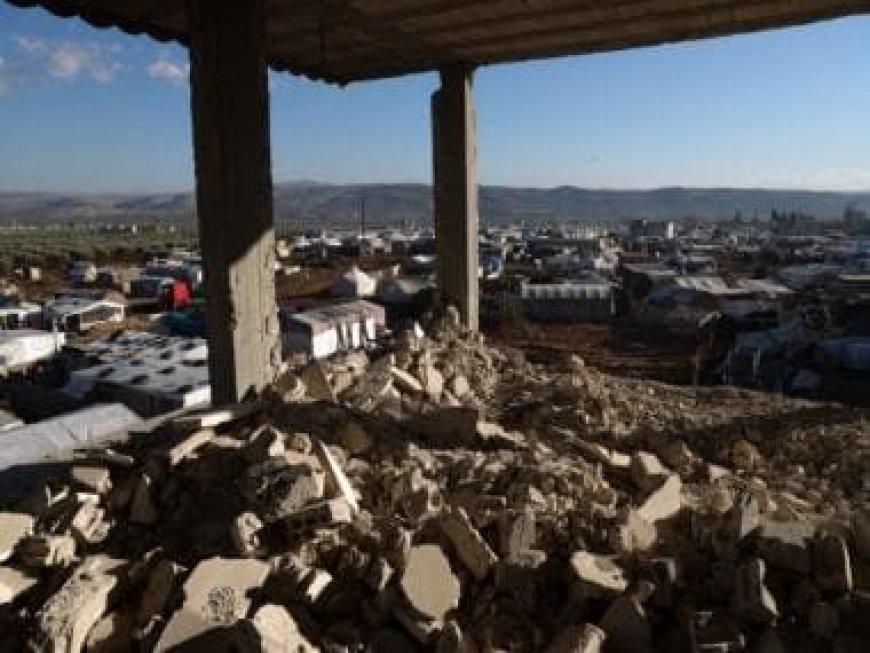Shrinking international aid and enduring conflict compound earthquake misery for Syrians one year on
Shrinking international aid and enduring conflict compound earthquake misery for Syrians one year on

Sido Naji woke up to the trembling of his northwest Syrian home a year ago. After almost ten years of war, he was accustomed to the noises of airstrikes and artillery, but this time the attacker was a natural occurrence: a powerful earthquake.
Before the home fell, the sixteen-year-old and his father were able to escape. In Jinderis, in the Aleppo region, they were weaving through a busy street when a stone wall fell on them, fracturing the teen’s arm and crushing his leg.
On February 6, 2023, a horrific 7.8-magnitude earthquake struck Syria and Turkey, killing almost 59,000 people.
When it came to its survivors in Syria, the enormous earthquake exacerbated the country’s already extreme poverty, devastated hospitals, water and electricity infrastructure, and drove many of the country’s already-displaced Syrians into makeshift settlements.
Like many other earthquake-affected localities in Syria, Jinderis has seen almost no rehabilitation, with entire blocks still covered in rubble. Naji lives in a dirty tent after having his leg amputated.
“It’s cold at night and there is no lumber (for heating) or anything,” he said.
Syria has been wracked by an uprising-turned-civil war since 2011, and the conflict in the opposition-held northwestern enclave is at its worst in years. Syrian and Russian military shelling and strikes have killed dozens of people and displaced more than 100,000 others there since August.
The earthquake killed at least 6,000 people in Syria, mainly in the northwest, where most of the 4.5 million people rely on humanitarian aid to survive. Some 800,000 people living in tents need to be rehoused.
The World Bank estimates the quake caused more than $5 billion in damage across northern Syria.
Nonetheless, an initial outpouring of international assistance quickly subsided.
United Nations agencies and other humanitarian organizations have been struggling to fund programs that provide a lifeline in Syria, blaming donor fatigue, the COVID-19 pandemic, and conflicts elsewhere that have erupted in recent years.
The U.N.’s World Food Program, which estimates that over 12 million Syrians lack regular access to food, announced in December that it would stop its main assistance program in Syria in 2024.
Tanya Evans, the International Rescue Committee’s Syria Country Director says needs on both sides of Syria’s frontline have never been higher.
“Families are facing rampant inflation coupled with loss of jobs, and having to make heartbreaking decisions about getting food on the table or going hungry,” Evans told The Associated Press.
Yasmine al-Ali at the Salah ad-Din camp in the Idlib countryside shivers as she tries to tie her ragged tent together and digs a ditch in the mud to stop water from flooding her makeshift home.
Patting a drenched mat inside the tent, she says: “Look, it’s just water and mud. … We need new tents.”
Yasine al-Ahmad, who manages the camp of more than 500 families, says wood for heating is far too expensive, so most people burn plastic instead, filling the camps with toxic smoke as they do whatever they can to get through the winter. Many have to skip meals due to food insecurity and rationing.
“There’s also been difficulties in supporting water stations, education services, medical support in hospitals,” U.N. Deputy Regional Humanitarian Coordinator for the Syria Crisis David Carden told the AP during a visit to northwestern Syria in late January. While the needs are growing, he said, “We cannot do more with less.”
The U.N. was only able to secure 37% of the $5.3 billion needed for its 2023 humanitarian response in Syria, which Carden said was one of the lowest funding targets since the conflict started.
And with a political solution nowhere in sight, Syria’s conflict has become a major obstacle for humanitarian organizations.
It is “hard to convince donors to build for longer term, for development,” said Rosa Cresanti, the head of the World Health Organization office in Gaziantep, Turkey. “We are still in a humanitarian situation because of the ongoing conflict. This is the main reason why there are no long-term plans.”
Ahmed Koteich, a construction worker, said people have stopped waiting for aid and are trying to cobble together whatever resources they can to restore and restock their shops and farms.
“The international community said it stood with the residents, with their thoughts and rhetoric,” Koteich said. “But this talk won’t help the people here.”
What's Your Reaction?



























































